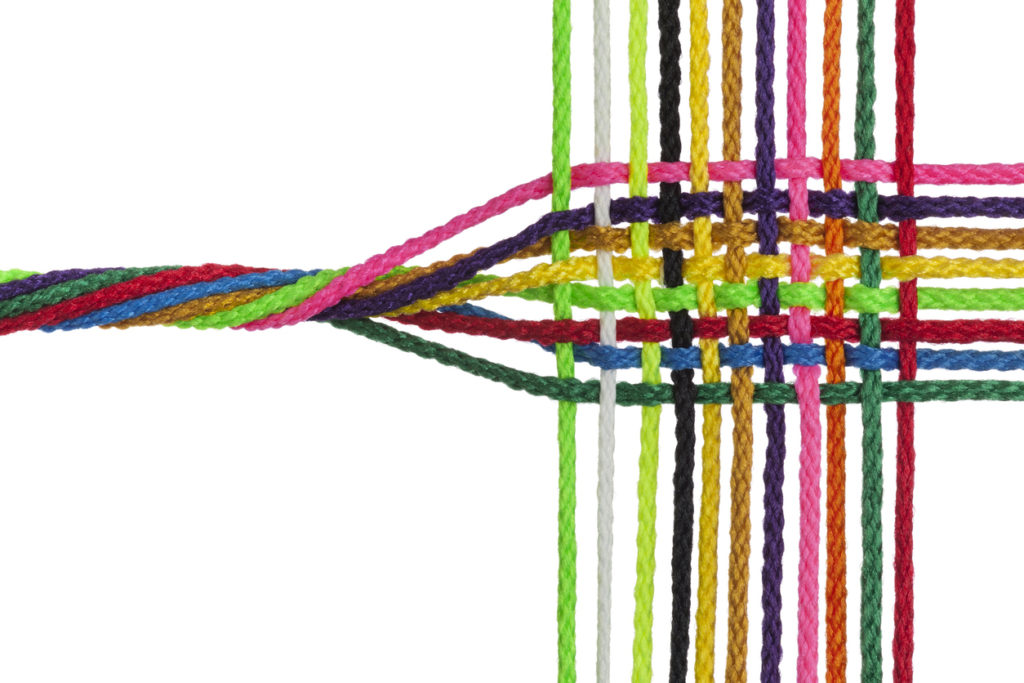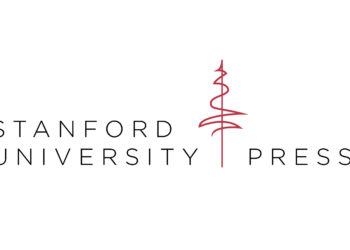Note from Scholarly Kitchen Chef Lisa Hinchliffe: Alexa Colella (@weequipped) is the marketing manager for journals at the University of Illinois Press. Though we both work at the University of Illinois, as these things sometimes go, I met Alexa at the Charleston Conference last year. Alexa is interested in advancing journal scholarship in the humanities and social sciences with creative and innovative projects and initiatives. The Common Threads project intrigued me as an example of how content finds new audiences when presented in new ways.
The scholarly communications ecosystem continues to evolve rapidly. Things are becoming more complex as we respond to a growing diversity of needs and expectations and also work to innovate for the future. I see this in a tangible way on a daily basis as the journals marketing manager for the University of Illinois Press. As a relatively small and non-profit publisher, our scope for large scale innovations in a competitive environment can be comparatively narrow. Nonetheless, we also recognize the impact that small and incremental steps can have on our ability to adapt to changes in our ecosystem. We explored some of the ways we can make incremental changes with big impacts by developing a new publication, Common Threads.

The Common Threads series is a curated journal anthology series. We created it as to experiment with the organization of our back content and alternative distribution models. Born out a handful of immediate needs and long term projections, it was developed in 2015 in the University of Illinois Press journals department by Clydette Wantland, the journals manager, and myself. The series currently has seven available volumes with two that are in process/production.
Each volume in the Common Threads series is comprised of a collection of articles that are curated around a theme, a gap in scholarship, or the needs of a course. Each one typically contains 8-14 articles and an original introduction by an editor. The series is designed to be flexible enough to accommodate variable needs of the scholars and editors who assemble them. As the amount of scholarship continues to grow, Common Threads asks what new insights and utility can be found in reorganization.
When we began developing this series, we were experiencing a state-wide financial crisis. A budget stalemate threatened our parental funding from the University. But, though perhaps spurned on by this crisis moment, we were also seeking ways to reach additional audiences. While our journals and their articles are discoverable (and accessible with a subscription), they do not have the same exposure to the wider retail market as our monographs. Additionally, the open question of whether there was unmet demand for journal content that was clearly branded for an exclusively scholarly audience also motivated us to consider alternative ways to disseminate this scholarship.
As publishers, we had been hearing from libraries, students, faculty, and the general public that the heavy financial burden of purchasing scholarly texts was becoming increasingly problematic. There was just too much stress on all of our stakeholders. As we observed journal subscriptions starting to decline, we developed a few theories that heavily informed our decision to create the Common Threads series.
- We believe that widening the accessibility of our content can only be a good thing. While we were unable to make our articles open access, we recognized that we could add a distribution model for related content. And, we could do this at a more accessible price point, especially for students.
- We had observed that scholars, especially in the humanities, have been moving away from loyalty to any given specific journal title. The increasing emphasis of multidisciplinary research was driving more granular but integrative inquiry that an individual subscription to a field’s primary journal could no longer satisfy.
- We believe that changes in the scholarly and scholarly communications ecosystem will drive and be the impetus for future innovations. It is simply prudent to build agility and flexibility into our workflows and prioritize research and development to be able to respond to changes effectively.
- We noted that subject matter packages on the platforms we most widely utilize make decisions based on taxonomies that might divide press content along lines that are not in line with the interests and mental mindsets of scholars.
- We recognize that scholarly content is attractive to general audiences; however, journal content is historically inaccessible to them due to its subscription distribution model.
Edited collections are not a particularly revolutionary idea; however, as we experimented with the series, we began to imagine how Common Threads could be expanded into any number of things. Once we began exploring the practicalities of actually producing these volumes, we realized that their primary function would end up being a bucket for experimental projects for which we had no established workflows. For example, an upcoming volume consists of no pre-published journal content but is a series of ten transcribed and fact-checked radio interviews that will also be available as an open access supplement to one of our journals. It was included in the Common Threads series partially because of the way the series can accommodate alternative projects.
There were challenges in developing the series and continued innovations raise new issues. Most substantially we find ourselves grappling with who should be responsible for the labor required to complete volumes in this series and the management of when that labor should occur. The Press is wonderfully efficient at producing high quality scholarly journals and monographs. But when staff have very clearly-defined roles in the existing workflows, which produce the same type of product over and over, it can be difficult to get buy-in and help with a new kind of product that disrupts the usual chain of command. The articles in most Common Threads volumes were already peer-reviewed, had copyright assignments or permissions, and needed only minor proofreading. Much of the labor of our monographs workflows was removed therefore; however, because they would be distributed through the same channels as our books and converted to .xml, the easiest solution was to put them in a books pipeline. Consequently, the volumes in this series come in and out of a pipeline designed to be as linear and integrated as possible to maximize the quality and efficiency of the production of our books. This requires careful management of logistics and communications.
The successes of the Common Threads series has been due to the flexibility and enthusiasm of key staff to open up their routines to something that is not routine. Accepting new project management responsibilities, anticipating critical touchpoints between Common Threads and our typical production pipeline, creating series branded cover designs that merged journal branding with a series template, making case-by-case adjustments to our contracts, and finding ways to include Common Threads into our course adoption processes were just some of the adjustments many staff made to their typical workloads. Making adjustments required a lot of patience, creativity, and collaboration on the part of our whole staff.
Growing pains inevitably exist with the introduction of any “new thing” but each volume in the Common Threads series has been incrementally less challenging to accommodate. As familiarity with the series increased and its successfulness established, so did our ability to be less distrustful of the times when the needs of these volumes challenged our established processes. Our growing comfort with the differences brought about by the Common Threads series has allowed for expansions in the content of the series, also. As we take on more volumes, we expect to be able to increase their complexity.
In the future, we plan to continue to address the problems listed above by creating volumes with multiple journals, collaborating with other presses, and keeping a keen eye on both current events and the changes occurring in scholarly communications to identify new and upcoming challenges. Though we cannot control the changes that will ultimately challenge our conventions, Common Threads helped us adapt to changes by pairing together pragmatism and forward thinking and allowed us to work more collaboratively, creatively, with a focus on innovation. This series also reminded us that innovations don’t have to come in groundbreaking and disruptive packages, but can also come in the form of incremental change that enables working across that boundaries that might be inhibiting a culture of creativity and experimentation.
Discussion
6 Thoughts on "Guest Post — Common Threads: Doing Things Differently So We Can Do Different Things"
“We recognize that scholarly content is attractive to general audiences.” I don’t believe that this is true, with some tiny exceptions. General audiences are watching “Duck Dynasty” and “The Bachelorette.” Scholarly journals are by and for scholars. What’s wrong with that? I am a keen advocate of what is derisively called “popularization,” but to reach a general audience is very, very hard to do. It requires an entirely new product development process. It’s called trade publishing, and it’s notoriously difficult to come up with a financially sustainable model for it.
Thanks for your comment! For the most part, I agree with you. We certainly don’t believe that all scholarly content is suitable to a general audience, but there is definitely some. And with this, we were not attempting to shift exclusively to this model but to add to existing models. We also don’t think that this product should be geared to only a non-scholarly audience, but it allows for more flexibility to offer alternative models when appropriate.
The coming volume, Palestine on the Air, is much more appropriate for non-scholarly audiences, for example, than some of the previous volumes in this series.
Thanks for sharing this project–your article has sparked an idea about what I could be doing to bring together different kinds of material produced at my own institution for sharing with our audiences, both scholarly and non-scholarly.
Thank you so much! I’m glad you enjoyed the post.
As an independent researcher I can only agree that purchase costs are too high; when access to a single journal article can cost over $30 it may be easier to reference it unread, which is not always wise. However as an author without institutional backing the cost of making an article open access, often over $1000, is prohibitive. So any initiative that reduces either is welcome.
Thank you! I agree. Solutions that look for ways to think creatively about how we deliver content to be more sensitive to our audiences is, indeed, important.



